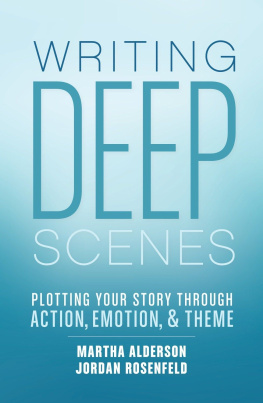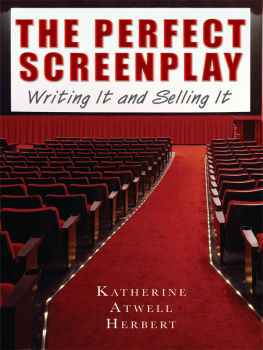Linda J. Cowgill - The Art of Plotting: Add Emotion, Suspense, and Depth to Your Screenplay
Here you can read online Linda J. Cowgill - The Art of Plotting: Add Emotion, Suspense, and Depth to Your Screenplay full text of the book (entire story) in english for free. Download pdf and epub, get meaning, cover and reviews about this ebook. year: 2011, genre: Art. Description of the work, (preface) as well as reviews are available. Best literature library LitArk.com created for fans of good reading and offers a wide selection of genres:
Romance novel
Science fiction
Adventure
Detective
Science
History
Home and family
Prose
Art
Politics
Computer
Non-fiction
Religion
Business
Children
Humor
Choose a favorite category and find really read worthwhile books. Enjoy immersion in the world of imagination, feel the emotions of the characters or learn something new for yourself, make an fascinating discovery.
- Book:The Art of Plotting: Add Emotion, Suspense, and Depth to Your Screenplay
- Author:
- Genre:
- Year:2011
- Rating:4 / 5
- Favourites:Add to favourites
- Your mark:
- 80
- 1
- 2
- 3
- 4
- 5
The Art of Plotting: Add Emotion, Suspense, and Depth to Your Screenplay: summary, description and annotation
We offer to read an annotation, description, summary or preface (depends on what the author of the book "The Art of Plotting: Add Emotion, Suspense, and Depth to Your Screenplay" wrote himself). If you haven't found the necessary information about the book — write in the comments, we will try to find it.
The Art of Plotting: Add Emotion, Suspense, and Depth to Your Screenplay — read online for free the complete book (whole text) full work
Below is the text of the book, divided by pages. System saving the place of the last page read, allows you to conveniently read the book "The Art of Plotting: Add Emotion, Suspense, and Depth to Your Screenplay" online for free, without having to search again every time where you left off. Put a bookmark, and you can go to the page where you finished reading at any time.
Font size:
Interval:
Bookmark:


J

INTRODUCTION
What is screenwriting?
A) An occupation
B) An art form
C) A disease
If you chose any of these answers, you'd be correctand if you chose all three, you get extra credit. For many, screenwriting is both a delight and a curse. It's a creative outlet that affords writers the chance to allow their dreams to take shape. All too often, however, the realities and demands of the marketplace crush the pleasure of the process. Of course, there's no rule that says every good script must sell. But, frequently, a writer who believes his script has all the components of a great movie faces deep disappointment when his work fails to gather any interest because, in truth, the writer really had little understanding of the unique requirements of a film story.
Most of us are introduced to narrative writing when we compose essays and short stories in school. However rich our imaginations and compelling our prose, our work is judged as stories that are read, rather than as the blueprint for a story that will be seen. There is a major difference between the two types of writing. Screenwriting relies on the language of drama to communicate ideas effectively to the audience. Screenwriting utilizes an active voice as opposed to a passive one and requires action and conflict to develop meaning.
The Art of Plotting will help you understand this language of drama so that you can make your stories more satisfying to your first audience who is still a reader, but also a professional who is looking for stories at will make great movies. The goal
is to excite this reader with effective plotting, which includes strong characterizations, story momentum, and tension. The art of plotting is all about how you lead your audience through the information of the story, keeping them intrigued and excited so they feel the way you want them to feel throughout the whole experience. As a screenwriter you are not just forcing them to ask, "What happens next?" You are managing their emotions at each stage of the story. The art of plotting is the art of transforming a dry narration of events into an emotional experience.
This book is not a beginner's manual. To get the most out of it, you'll need a basic knowledge of screenwriting. There is no formula I set forth that promises to turn you into a top-selling screenwriter. What The Art of Plotting offers is insight into key issues in plot design and construction: how you put your information together to make your story more powerful and important to your audience. I start by defining plot clearly and then show that plot is not only about creating a sequence of scenes that illustrates the events of the story but also about managing the resultant emotion. The aim is to give you tools that integrate plot, characterization, exposition, and emotion to create stories that are compelling and meaningful.
Since Syd Field's Screenplay hit the racks twenty-five years ago, the number of screenwriting books has multiplied exponentially. The focus of most of these texts has been on structurehow to build the relationship between the parts that hold the whole work together. But even with all this attention to plot points, premise techniques, and dramatic building blocks, many of the most sharply chiseled three-act stories fall flat. Emotion is what's missing.
Now more books and teachers are finally talking specifically about this elusive ingredient. Emotion, however, has always been a part of the screenwriting lexicon; it just hasn't been explained well. It's the hardest part of screenwriting to teach because it's more difficult to quantify than action, obstacles, and complications. To play emotion effectively, you need an understanding of human nature, if not fundamental psychology. The luckiest students have picked it up almost intuitively and incorporated it in their work. But if you read Aristotle, Lajos Egri, or John Howard Lawson, you'll see they all talk about "emotion," though in different ways. Aristotle talks about catharsis, amplitude, pity, and fear. Egri speaks of the progression of character in terms of emotions. Lawson writes about dramatic action within a social framework. They just don't explain how to show it.
Don't think I'm throwing out the importance of structure. I wrote an entire book on the topic Secrets of Screenplay Structure. You have to have structure and truly understand how it works to create a story that has maximum emotional effect. But good structure alone is not what makes a story powerful.
There are three main areas I discuss here. The first is this idea of emotion. It doesn't matter if you get to an emotional payoff with laughter, fear, or tears (or all three), but you have to get there. Many writers are afraid of emotion and leave it out entirely; or they rely on easily stereotyped emotions such as sadness or anger. A successful screenplay must be conceived both in terms of plot action and emotion. A writer needs to know what he wants his reader to feel while judging his screenplay, and it's the plot line that is his only tool.
Second, many screenwriters overplot their stories with too much action and event, constructing their screenplays in a long list of separate scenes, sixty or so, and expecting readers to follow along and get the point of each. Your audience won't be able to track a story that has an original point in every single scene. You're writing drama, not a novel; you can't stop the narrative to explain every nuance. The plots of movies develop in segments, groups of scenes expanding a main idea that then advances the plot. You don't want to overload the plot with incident after incident. This propensity leads to an important, underappreciated law of screenwriting: When you overplot in terms of action, you underplot in terms of character and emotion. You won't have time to work in illustrative character responses to the conflict when your plot depends on a lot of action.
Third, writing a script has as much to do with understanding the technique of writing for film as it does with action or inspiration. I cover in detail the technical issues of assembling the scenes and sequences of your plot to get the most dramatic bang out of your ideas. I examine the role conflict plays in creating a great plot, how to increase tension and suspense, and the ways to deepen your characterizations along with the audience's involvement in your story. I show you how to transform plot points into active beats of storytelling as well as how to recognize and overcome the most common plotting problems.
The overall goal of this book is to help you understand the principles of action and plotting in a way that will give you another set of tools to use when you look at your own work. With these tools, you'll be able to deepen the emotional impact of the conflict on the characters, simplify your story lines so that the action flows better, and tell the story you want to tell.
I often ask my students, which is more important, plot or character? There is always controversy, and opposing sides will often cite the same movies to make their points. When that happens it's very revealing because in a great movie the two are inseparableplot is character and character is plot. It mirrors what the Greek philosopher Heraclitus said: A man's character is his fate (that is, the "plot" of his life). We could just as easily reverse this idea and say a man's fate is his character. The Art of Plotting demonstrates this.
Font size:
Interval:
Bookmark:
Similar books «The Art of Plotting: Add Emotion, Suspense, and Depth to Your Screenplay»
Look at similar books to The Art of Plotting: Add Emotion, Suspense, and Depth to Your Screenplay. We have selected literature similar in name and meaning in the hope of providing readers with more options to find new, interesting, not yet read works.
Discussion, reviews of the book The Art of Plotting: Add Emotion, Suspense, and Depth to Your Screenplay and just readers' own opinions. Leave your comments, write what you think about the work, its meaning or the main characters. Specify what exactly you liked and what you didn't like, and why you think so.

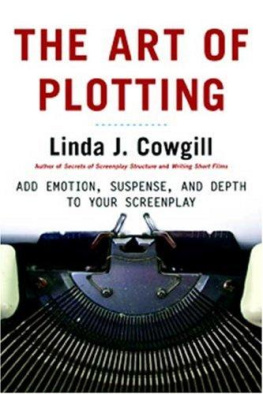
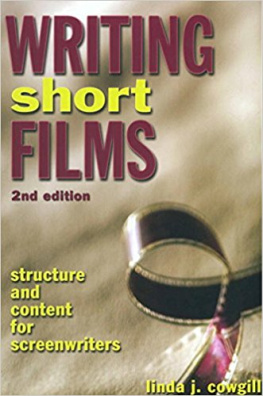


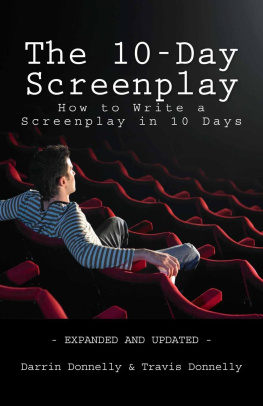
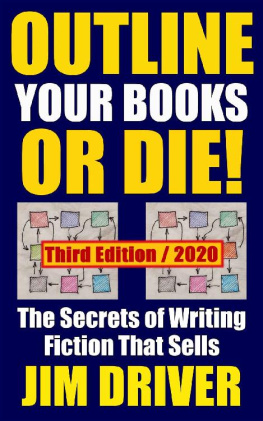

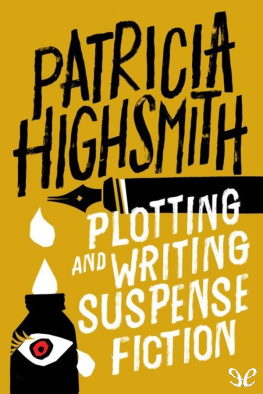
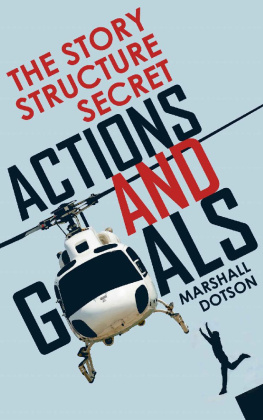
![Watt - The 90-day screenplay : [from concept to polish]](/uploads/posts/book/103527/thumbs/watt-the-90-day-screenplay-from-concept-to.jpg)
